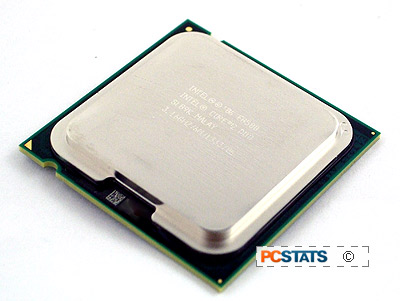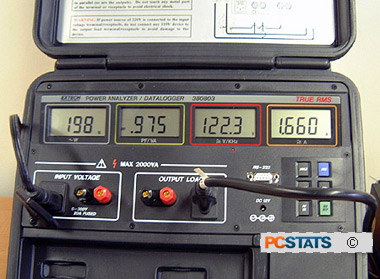 Gone are the days when performance benchmarks settled all
Intel vs. AMD processor debates. Energy efficiency is in, and if electrical
bills don't motivate you then reduced heat output and quieter cooling system
will certainly make your head turn
Gone are the days when performance benchmarks settled all
Intel vs. AMD processor debates. Energy efficiency is in, and if electrical
bills don't motivate you then reduced heat output and quieter cooling system
will certainly make your head turn
Wading through the technical numbers to figure out
the differences can be confusing because Intel and AMD report power values in
slightly different ways. On paper AMD lists its processors maximum
power TDP value, while Intel posts typical Thermal Design Power
figures.
Obviously the two measurements of processor power
consumption are not quite directly comparable, so to find out how processors
stack up in the power efficiency department we need to measure how much power
the computer draws while idle, then while in a CPU-stressed state.
 To get a more accurate indication of what speeds
the processors are currently running at, PCSTATS first disabled a bunch of AMD
and Intel's power saving and CPU clock speed throttling technologies like Cool
'n' Quiet, EIST (speedstep) and C1E power states.
To get a more accurate indication of what speeds
the processors are currently running at, PCSTATS first disabled a bunch of AMD
and Intel's power saving and CPU clock speed throttling technologies like Cool
'n' Quiet, EIST (speedstep) and C1E power states.
To simulate single-core load a program called Stress Prime (SP2004) is used.
PCSTATS set about stressing each processor from one to all cores. This programs
gives better insight into different power draw scenarios. The SP2004 program is
multi-threaded, allowing individual CPU cores to be stressed by each instance of
the program.
Total system power consumption was read with the
Extech Power Analyzer Datalogger (model 380803) for both CPU loaded and CPU idle
states. These values are measuring an entire system while the processor
is running under computational load or idle.
The Extech Power Analyzer is located between the
main 120AC supply and the PC's power supply. Given that motherboards vary across
these test systems this is not a "true" measure of CPU power draw alone, but
rather a measurement of the total computer system power draw, which we can
compare for each specific platforms between the CPU idle and CPU stressed
states.
| Total System Idle
Power Draw |
| Processor |
Total System Power Draw |
| Intel Pentium 4 540 |
   150 Watts 150 Watts |
| Intel Pentium D 840 |
   165 Watts 165 Watts |
| Intel Pentium D 940 |
   168 Watts 168 Watts |
| Intel Core 2 Duo E6600 |
   117 Watts 117 Watts |
| Intel Core 2 Duo E6750 |
   123 Watts 123 Watts |
| Intel Core 2 Duo E8400 |
   131
Watts 131
Watts |
 Intel Core 2 Duo E8500 Intel Core 2 Duo E8500 |
   114 Watts
114 Watts |
| Intel Core i7 920 |
   144
Watts 144
Watts |
| AMD Sempron 3600+ |
   120 Watts 120 Watts |
| AMD Athlon64 4000+ |
   163 Watts 163 Watts |
| AMD Athlon64 FX-60 |
   127 Watts 127 Watts |
| AMD Athlon64 X2 4800+ |
   143 Watts 143 Watts |
| AMD Athlon64 X2 5000+ |
   156 Watts 156 Watts |
| AMD Athlon64 FX-62 |
   168 Watts 168 Watts |
| AMD Phenom II X3 720 |
   155 Watts 155 Watts |
| AMD Phenom II X4 955 |
   148
Watts 148
Watts |
